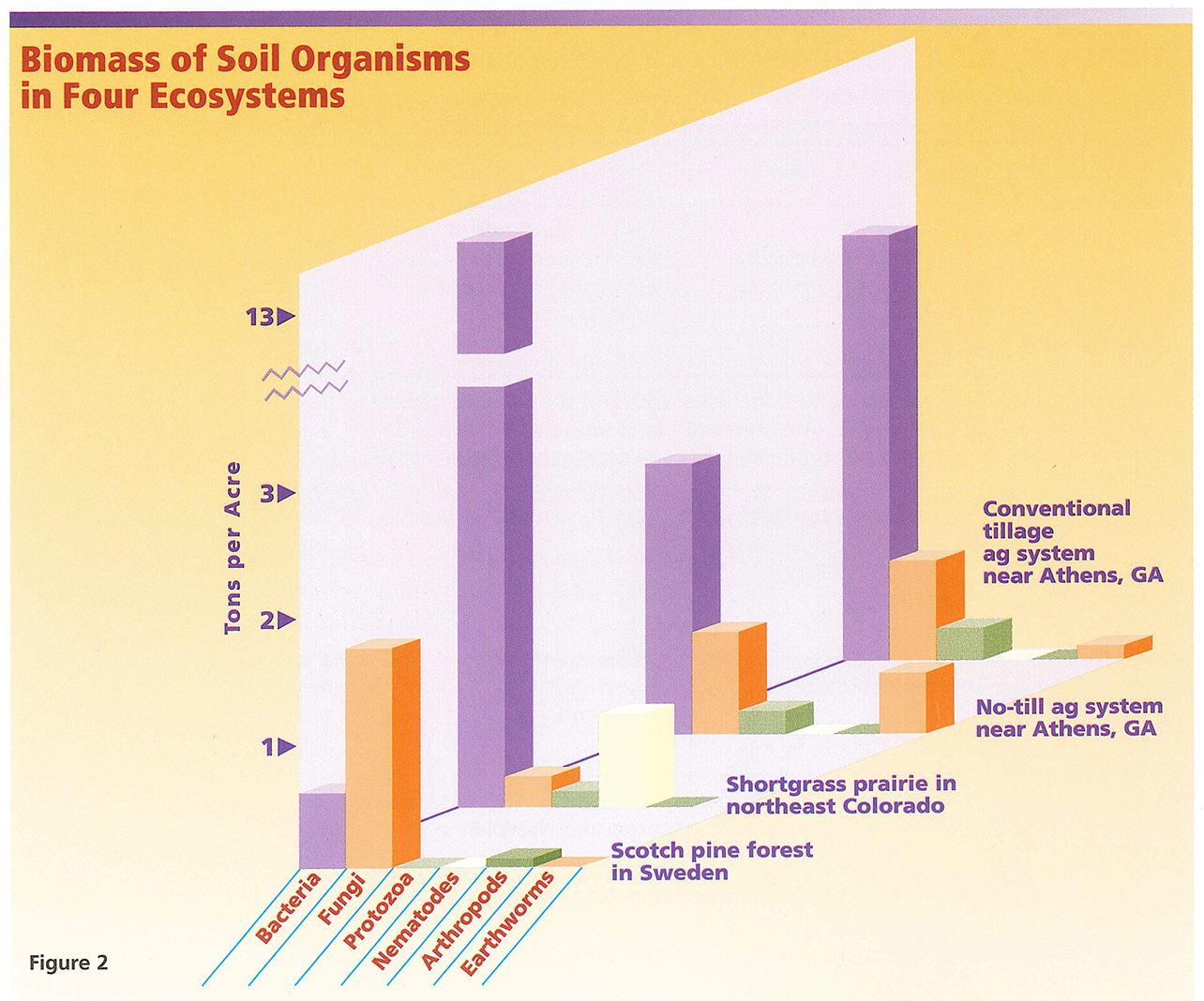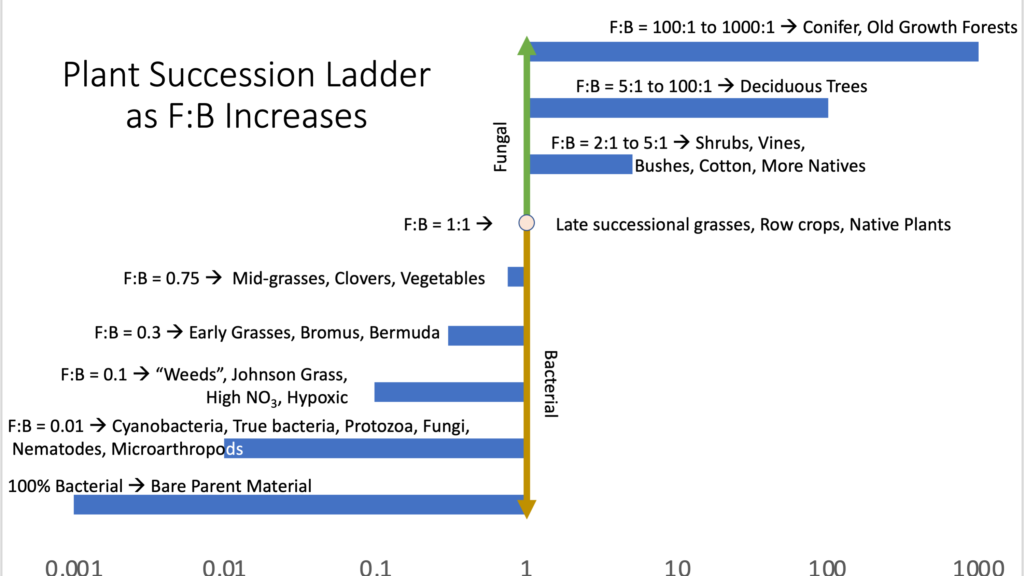
The graph pictured here from the USDA website depicts the ratio of fungi to bacteria as a characteristic of the type of system it is in. An excerpt from the article:
“Grasslands and agricultural soils usually have bacterial-dominated food webs – that is, most biomass is in the form of bacteria. Highly productive agricultural soils tend to have ratios of fungal to bacterial biomass near 1:1 or somewhat less. Forests tend to have fungal-dominated food webs. The ratio of fungal to bacterial biomass may be 5:1 to 10:1 in a deciduous forest and 100:1 to 1000:1 in a coniferous forest.”
If you are measuring soil attached to the roots colonized by mycorrhizal fungi, your ratios should be much higher than is shown for agricultural soil. Also the saprophytic fungi population increases when there is a lot of litter for digestion, so you would expect to see different ratios at different times of the year and under different conditions.
The graph pictured below based on USDA website information shows the expected fungal to bacterial ratio for various plants.
Please visit our Using the Fungal to Bacterial Ratio with microBIOMETER® on YouTube for more information on fungal to bacterial analysis.



One thought on “Analyzing your Fungal to Bacterial Ratio Results”
Comments are closed.